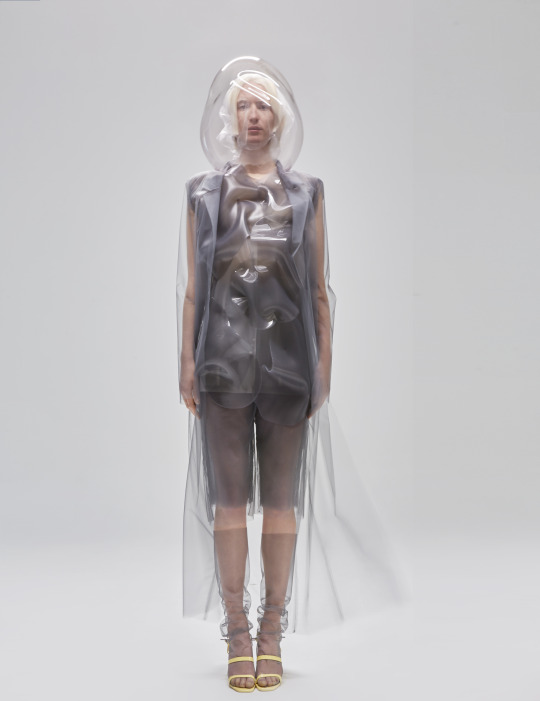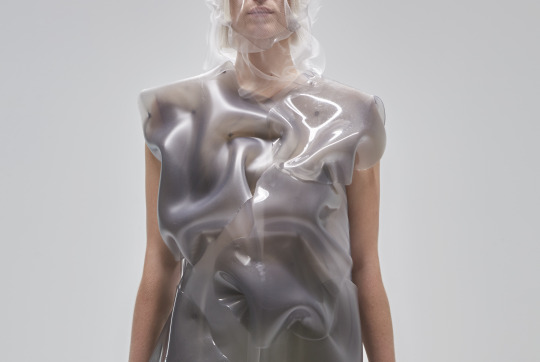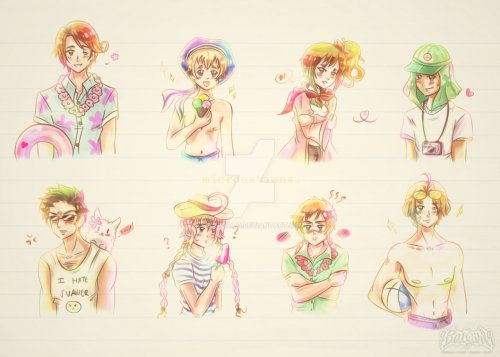#colour spectrum
“After the rain there were those birds and small clouds.
The sunset came quietly, with a lot of colour. A kind of pink
trembled on the water, side by side with orange. Strange, he said,
that there are colours, that we see.”
— Yannis Ritsos, “After Rain”, Exile and Return: Selected Poems, 1967-1974 (tr. Edmund Keeley)
“Peach blossom has a beautiful sensual pink, far from vulgar, most rare and private. And pink is so beautiful in a landscape, pink houses, pink almond, pink peach and purply apricot, pink asphodels. It is so conspicuous and so individual, that pink among the coming green of spring,”
D.H. Lawrence, from Sketches of Etruscan Places; “Flowery Tuscany,” (x)
“In Kosbad during the monsoons / there are so many shades of green / your mind forgets other colours…”
Sujata Bhatt, “Swami Anand”, Brunizem: Poems
Credit: Video by Alexandre de Bellefeuille - Photos by Malina Corpadean
By Shardell Joseph
Robotic clothing made out of silicone, glass and Polyvinylidene fluoride have been added with electronic devices making each piece of the garment react to its surrounding colour spectrum.

The Montreal-based Fashion Designer, Ying Gao, titled the collection ‘flowing water, standing time’, with the aim of capturing ‘the essence of movement and stability over a period of time. Gao also wanted to focus on the flow of ‘energies’ through a garment, and mirroring the colours in its immediate surroundings.’

This project was inspired by neurologist Oliver Sacks’ novel, The Man who Mistook his Wife for a Hat, in which he relates the story of Jimmie G, a 49-year-old former sailor convinced of being aged 19 since having left the Navy.
Shocked by his own reflection when Sacks hands him a mirror, Jimmie reverts to his 19-year-old self as soon as his gaze leaves the reflective surface. Having lost any sense of temporal continuity, Jimmie lives as a prisoner to this single, perpetual moment, oscillating between a presence to the world and a presence to self.

Reflecting the characters journey throughout the novel, the garments perpetually change between two states as they react to the chromatic spectrum. ‘In order to echo this varying mobility, the garments are capable of chromatic movement, said Gao. ‘Capable of recognising the colours in their immediate surroundings, they are at once liquid and chameleon-like, adapting to the slow rhythm of their ever-changing environment.

‘A mirror effect is at play – the garments are reacting to what they see. Much like Oliver Sacks’ patient, they alternate between what they are, and what they can potentially become – all the while embodying the inherent complexity of all things.’


